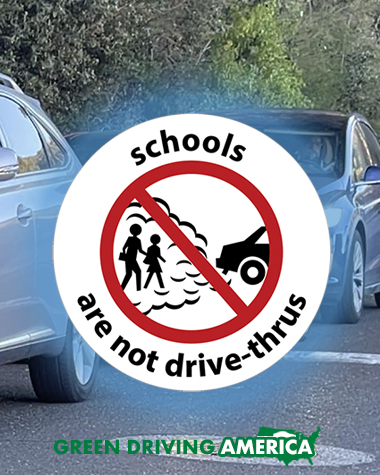
Photographer: Ryu Shukla, Scot Scoop
Vehicle idling can be harmful, wasteful and largely unnecessary. At many of America's more than 130,000 public schools, collectively, prolonged idling by passenger vehicles occurs as parents drop off and pick up students every school day. The pick up period is when most of this idling occurs as vehicles queue up prior to dismissal for 15 to 30 minutes.
This idling at schools mimics cars waiting in a drive-thru at fast food and coffee outlets, or at a bank, hence, the project name: Schools Are Not Drive-Thrus. We are also making a statement that this harmful and wasteful practice should not occur, especially at schools where the negative impact of toxic tailpipe chemicals from a caravan of idling vehicles not only contributes to climate change and fossil fuel use, it affects children whose lungs are still developing.
SCHOOLS ARE NOT DRIVE-THRUS© PROJECT
Green Driving America's Schools Are Not Drive-Thrus© is a funded environmental and health service project with a goal of implementing idle-free schools studies/campaigns spanning SIX TO TEN WEEKS with participating elementary, middle, and high schools, for the 2023-2024-2025 school year semesters.
THIS IS A FUNDED PROJECT; IT IS AT NO COST TO SCHOOLS
EDUCATORS: Contact Wayne Michaud, Green Driving America executive director, upon interest in having your school participate in these studies/campaigns: info@greendrivingamerica.org or 916-209-0224.
HIGH SCHOOL AND MIDDLE SCHOOL LEVELS (grades 6-12): Green Driving America works with science, math, STEM, health, and environmental teachers, and school environmental clubs and green teams, in student-led studies/campaigns.
ELEMENTARY SCHOOL LEVEL (grade 5; other grades can be discussed): Green Driving America works with teachers and parents* to engage school staff and students in the studies/campaigns.
*parent clubs/PTOs are encouraged to join in participation!
THIS IS FOR THE KIDS!
For their 2025 idle-free study/campaign, Oakland Technical High School students created an anti-idling message for the school community: STOPTHEIDLEOTHS
WHY IDLE-FREE SCHOOLS STUDIES/CAMPAIGNS?
Idling caravans, such as in drive-thrus and during school dismissals, cause idling “hot spots”, increasing toxicity around the vehicles
This project gets to the core of an environmental and health problem and how to address it without it being a sophisticated, technological solution to reducing transportation GHG emissions. This is a "nuts and bolts" behavioral solution that shows drivers the compelling reasons sitting in a car and idling for 15 to 30 minutes is a virtually unnecessary practice except during weather extremes*, such as less than 32º (keep in mind that a warmed up vehicle will retain most of its cabin heat for up to ten minutes; be prepared with warm winter clothing) or more than 80º (try to park in the shade and/or avoid air conditioning and open windows; the hottest temperatures in most regions occur when school is closed during the summer). Simply turn off the key.
*Idling can be necessary in weather extremes for frail elderly, infant and pet passengers.
THE MATH: based on observations in previously conducted Green Driving America idle-free schools projects, it can be estimated that on average 50 cars—90% of them still gas-powered—wait for 15 minutes or more during dismissal at one school and that 20 to 30 of them are idling. Idling can use a quarter to a half gallon of fuel per hour, so 20 to 30 cars idling for 15 minutes can burn 1.9 to 2.8 gallons in one dismissal period. Not a real big deal. But over a 180 day school year, this idling can consume up to 340 to 500 gallons of fuel. That can be 3.4 to 5.0 tons of CO2 emitted. Per school. That's significant, especially since most of this idling is unnecessary. Let us then imagine how much fuel is burned and CO2 emitted by idling vehicles at America's 130,000 schools, annually. Fuel burned: 44,000,000 to 65,000,000 gallons; CO2 emitted: 440,000 to 650,000 tons. But perhaps even more important is to keep in mind the health impact on children.
minutes can burn 1.9 to 2.8 gallons in one dismissal period. Not a real big deal. But over a 180 day school year, this idling can consume up to 340 to 500 gallons of fuel. That can be 3.4 to 5.0 tons of CO2 emitted. Per school. That's significant, especially since most of this idling is unnecessary. Let us then imagine how much fuel is burned and CO2 emitted by idling vehicles at America's 130,000 schools, annually. Fuel burned: 44,000,000 to 65,000,000 gallons; CO2 emitted: 440,000 to 650,000 tons. But perhaps even more important is to keep in mind the health impact on children.
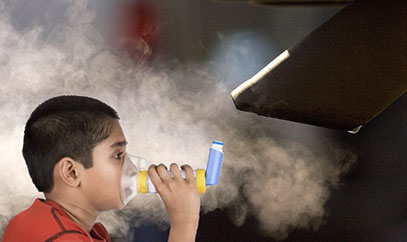
The U.S. EPA Idle-Free Schools Toolkit for a Healthy School Environment states: "Idling vehicles contribute to air pollution and emit air toxins, which are pollutants known or suspected to cause cancer or other serious health effects. Monitoring at schools has shown elevated levels of benzene, formaldehyde, acetaldehyde and other air toxics during the afternoon hour coinciding with parents picking up their children. Children’s lungs are still developing, and when they are exposed to elevated levels of these pollutants, children have an increased risk of developing asthma, respiratory problems and other adverse health effects. Limiting a vehicle’s idling time can dramatically reduce these pollutants and children’s exposure to them."
IDLING MYTHS: — BUSTED!
IDLING MYTH #1: IT'S BETTER TO IDLE FOR A MINUTE OR TWO THAN SHUTTING OFF AND RESTARTING
FACT: For light-duty gas vehicles such as compacts, sedans, SUVS and pickups, idling for more than ten seconds uses more fuel and emits more CO2 than shutting the engine off and restarting
IDLING MYTH #2: RESTARTING AN ENGINE UP TO TEN TIMES A DAY WILL SHORTEN THE LIFE OF A STARTER
FACT: Starters are "over-built". They are extremely durable and are designed to last for more than 30,000 starting cycles. The general rule is to not restart an engine more than ten times a day*; during the school dismissal waiting period, shutting off and restarting an engine more than several times is rarely necessary
*For vehicles not equipped with an auto stop/start system that shuts off an engine at a traffic light, for safety reasons, do not shut off an engine manually while waiting for a traffic light to turn green
IDLING STILL MATTERS!
CALIFORNIA: As of 2024, an average of 87% of light-duty vehicle fuel types on the road were gasoline and diesel, as opposed to vehicles that seldom emit pollutants at idle or not at all: hybrids, plug-in hybrids, and all-electrics.
OTHER U.S. STATES: As of 2023, more than 90% of light-duty vehicle fuel types on the road were gasoline and diesel, as opposed to vehicles that seldom emit pollutants at idle or not at all: hybrids, plug-in hybrids, and all-electrics.
SCHOOLS STUDIES/CAMPAIGNS 2022-2025
2022-2023:
CARLMONT HIGH SCHOOL
Belmont, CA


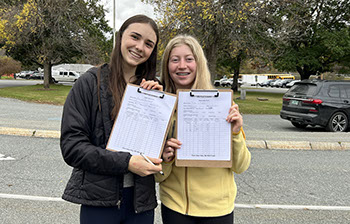
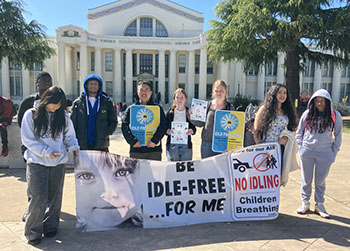
FALL 2025-SPRING 2026:
U-32 MIDDLE & HIGH SCHOOL
Montpelier, VT
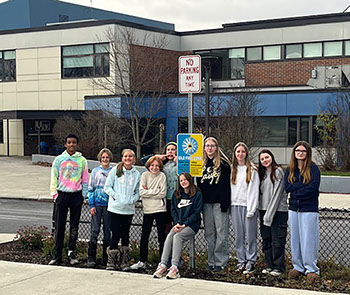
PREVIOUS IDLE-FREE SCHOOLS PROJECTS
In the 2017-18 school year, when the organization was called Idle-Free California, a pilot project, Sacramento County Idle-Free Schools, was implemented at two schools.
And from 2014-16, when the organization was located in Vermont and called Idle-Free VT, we implemented Vermont Idle-Free Schools funded measured studies/campaigns at 11 schools.
Thirteen of these 17 studies/campaigns have included initial and final measuring (all efforts include a minimum of one measuring step) , and have combined to reduce idling at participating schools by
more than 40 percent overall, with the seven most recent studies/campaigns reducing idling by 49 percent.
Data collection of all school efforts are included on these linked pages.
HOW STUDIES/CAMPAIGNS WORK
THESE ARE FOUR-STEP EDUCATIONAL EFFORTS RUNNING
SIX TO TEN WEEKS
They can run in the fall or spring semesters.
Altogether, the time-line through the four steps is expected to be 15 to 20 hours.
Step 1: INITIAL TRAINING SESSION/PRESENTATION - In late summer/early fall school semester or late winter/early spring school semester, an initial training session is conducted in the classroom either virtually (such as with Zoom) by Green Driving America, or in-person by the teacher. An approximately 45-minute PowerPoint and videos presentation (see below) shows: what idling means, its impact, touching on alternatives to being driven to school, such as Safe Routes to School, and how a study/campaign works. Materials are provided, including:
• Downloadable documents, below, for students and teacher/advisor containing full details of the study/campaign steps including conducting measuring data collection (Step 2), the school administration roll in the study/campaign (Step 3) and procedure for the Driver Contact Event (Step 4)
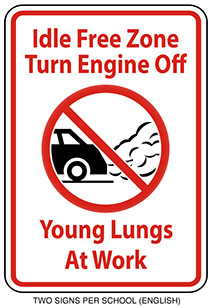
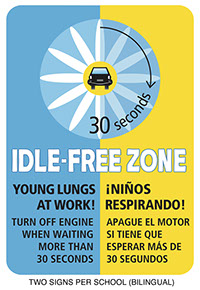
Step 2: OBSERVATIONS & MEASURING -Following Step 1, three to six students (student-led from grade six and up; staff/parent-led below grade six) will conduct three days of data collection unobtrusively1 to determine the number of vehicles waiting during the dismissal period and to determine as best as possible how many are idling and for how long.2 It is strongly encouraged that these students/staff/parents begin conducting this measuring at least 15 minutes prior to official dismissal time and continue the process until all vehicles have departed.
Step 3: FOR SCHOOL ADMINISTRATION -Soon following Step 2, the school announces support for the idle-free study/campaign in the school community, (preferably on school letterhead) on the school website and/or newsletter. And the school installs our two provided idle-free zone signs (choice of English or bilingual; shipped to school) in strategic areas.
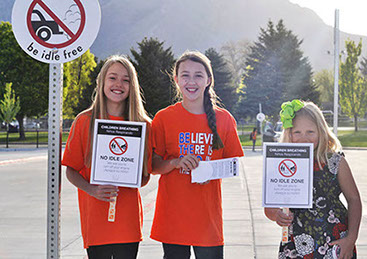
Step 4: DRIVER CONTACT EVENT - In later fall or mid spring—the final step of the study/campaign—a two-day "Driver Contact Event" is conducted by students/staff/parents to raise awareness of the idling issue with drivers. Ahead of this event, idle-free zone signs are in place, and campaigners have created idle-free posters to display at the event. All drivers, whether idling or not3, are offered our provided information handouts and customized keychain incentives (with school logo), both shipped to school. Middle or high school students practice this "contact" ahead of time with staff/parents. For drivers who are idling, they are asked to read the handout and to consider turning off the engine.
PUBLICIZING STUDY/CAMPAIGN: ahead of event, GDA and the school's teacher/advisor will work with the school administration or school district's communications office in seeking a school’s student news source, TV, radio, print and/or social media coverage.
NOTE: for safety purposes, it is highly recommended that students, who will be walking amongst cars in pick up areas, wear safety vests.
Optional Step 5: SECOND MEASURING -Conducting a second measuring step to determine a before and after difference. This option is for studies/campaigns that start in the fall semester only. This three days of remeasuring would occur in a similar temperature range as initial measuring for a comparable data set: if initial measuring were conducted between mid-September and early November, the final measuring would best be conducted between mid-March and mid-May. This step is optional as GDA has already conducted 13 long-term idle-free schools studies/campaigns that included initial and final measuring to determine a more than 40 percent reduction in idling overall; the most recent seven efforts have reduced idling by 49 percent. GDA also discourages two measuring steps due to the length of a study/campaign, which has resulted in several schools not completing one.
After study/campaign completion, school administration is provided a PDF containing full information on how to sustain this effort in following school years, as well as consideration for adopting a school idle reduction policy or practice.
1Why unobtrusively? Drivers should not be informed a vehicle idling study is being conducted as some may turn off engines, skewing the results. Students can tell drivers they are conducting a general transportation study for the school, if asked.
2OPTIONAL: Schools that possess a CO2 or CO gas sensor, or other emissions analyzer, and a compatible interface, are welcome to collect supplemental emissions data from vehicles.
3Thank drivers who are not idling. Additionally, try to identify cleaner vehicles that seldom idle (full hybrids like a Toyota Prius or plug-in hybrids) or do not idle at all (electric vehicles such as a Tesla, Chevy Bolt, Nissan Leaf, Hyundai Ioniq 5, Rivian pickup, Ford Mustang Mach-E - EVs do not have tailpipes or an open grille) and thank these drivers as well.
NOTE: School buses are not included in these studies/campaigns as most states regulate the idling of school buses and other heavy-duty vehicles at or near schools; passenger vehicles in most states are not regulated.
LOGISTICALLY, HOW IDLING DURING DISMISSAL PERIOD CAN BE REDUCED BY 80%
NOTE: Each school's study/campaign will be updated on this website as it progresses.
TRAINING SESSION
PRESENTATION DETAILS
(Step 1)
For elementary, middle, and high school educators:
Below are video images (advancing in 14 seconds each) - a representation of the full, animated Schools Are Not Drive-Thrus© slide presentation for our idle-free schools studies/campaigns initial training sessions (in its current developed form) that will be given, along with two or more videos. NOTE: most slides include notes that the presenter will use to elaborate upon.
NOTE: The full, animated Schools Are Not Drive-Thrus PowerPoint that will be shown is copyrighted and the property of Green Driving America Inc. It may not be used or recorded without permission. The other videos below are open source and may be freely used.
PowerPoint better viewed on non-mobile devices
MATERIALS FOR STUDY/CAMPAIGN
(Steps 2, 3, & 4)
FOR CAMPAIGNERS, TEACHER/LEADER, and SCHOOL ADMINISTRATION:
Downloadable documents in
WORD
WORKING WITH TEACHER/LEADER: SANDT study/campaign: guidelines/roles for Teacher/Leader, GDA executive director and school administration
STEP 2: OBSERVATIONS & MEASURING for campaigners and teacher/advisor
• Conducting observations/measuring; Conducting observations/measuring-optional step 5 only
• Format for calculating data; Format for calculating data-optional step 5 only
STEP 3: FOR SCHOOL ADMINISTRATION:
Green Driving America will work with school administration to provide two Idle Free Zone signs that the school will have installed. With the following document template, school administration will take action in the school community by officially announcing support for the idle-free study/campaign on the school website and/or newsletter (preferably on school letterhead):

STEP 4: DRIVER CONTACT EVENT for campaigners and teacher/advisor
• How to conduct driver contact event
• Suggested script for driver contact event
NOTE: 65 8.5"x11" idle-free information handouts (PDF)
and 40
customized keychain incentives
(with school logo)
shipped to participating schools
SCHOOL ADMINISTRATION: SUSTAINING THE EFFORT IN FOLLOWING SCHOOL YEARS
THE DIFFERENCE THESE STUDIES/CAMPAIGNS MAKE
WHY AN IDLE-FREE SCHOOLS PROJECT? The goal to mitigate idling on school grounds is a real win-win! The benefits:
• Based on GDA past idle-free schools measured studies/campaigns, idling has been reduced by
more than 40 percent overall, with the seven most recent studies/campaigns reducing idling by 49 percent
• People's health—particularly of students—is protected
• Carbon emissions and energy
consumption is reduced
• Students, depending on their grade, learn organizational, analytical and communication skills as they perform data analysis, are empowered by showing drivers the significant benefits in shutting off engines when parked, and take pride
in making a positive difference in their
school community
• Motorists, learning about saving money in needless fuel use, engine wear, and maintenance, will potentially practice idle reduction beyond schools
SUSTAINING THESE EFFORTS IN PROCEEDING YEARS: Green Driving America provides participating schools a written guideline (SEE ABOVE) to help sustain these efforts. Schools or school districts in proceeding years are strongly encouraged to reinforce the message of idle free zone signs to remind the school community about the benefits in idle reduction several times each year, and to consider adopting policies, procedures, or handbook rules that limit idling on school grounds.
GREEN DRIVING AMERICA (and Idle-Free California and Idle-Free VT) IDLE-FREE SCHOOLS STUDIES/CAMPAIGNS MEASURED IMPACTS: SCHOOL YEARS
UPDATED 2024
Calculations based on reductions (or increase) in fuel consumption and CO2 emissions for school year, relative1 to the number of vehicles observed - initial vs final measuring
2014-2015: Vermont six schools: 31% idle reduction overall
- Hartford High School- 85% idle reduction Reduction: fuel: 112 gal; CO2: 2,240 lbs
- St. Albans City School- 58% idle reduction Reduction: fuel: 58 gal; CO2: 1,160 lbs
- Champlain Valley Union HS- 36% idle reduction Some final data incomplete
- Essex Middle School- 20% idle reduction Reduction: fuel: 15 gal; CO2: 300 lbs
- South Royalton School- 5% idle reduction Reduction: fuel: 3 gal; CO2: 60 lbs
- Middlebury Union HS- 16% idle increase Increase: fuel: 7 gal; CO2: 140 lbs
2015-2016: Vermont five schools: 41% idle reduction overall
- Shelburne Community School- 74% idle reduction Reduction: fuel: 195 gal; CO2: 3,892 lbs
- Lyndon Town School- 58% idle reduction Reduction: fuel: 97 gal; CO2: 1,940 lbs
- Stowe Middle School- 39% idle reduction Reduction: fuel: 22 gal; CO2: 440 lbs
- Main Street Middle School- 33% idle reduction Reduction: fuel: 14 gal; CO2: 280 lbs
- Hunt Middle School- 0% idle reduction Reduction: fuel: 0 gal; CO2: 0 lbs
2017-2018: California two schools: 67% idle reduction overall
- Orangevale Open K-8- 67% idle reduction Reduction: fuel: 499 gal; CO2: 9,980
- Katherine L. Albiani MS- data incomplete Final measuring not conducted
2022-2023: California two schools: 75% idle reduction overall
- Eagle Peak Middle School- initial measuring study/campaign only
- Carlmont High School- 75% idle reduction Reduction: fuel: 141 gal; CO2: 2,829 lbs
2023: Vermont one school
- Woodstock Union HS&MS- initial measuring study/campaign only
TOTALS: 17 STUDIES/CAMPAIGNS; 13 INITIAL AND FINAL MEASURED STUDIES/CAMPAIGNS - 41% IDLE REDUCTION AVG. DIRECT* FUEL REDUCTION (GALS.)-12 EFFORTS: 1,149 (96 gal. per school avg.)
AVG. DIRECT* CO2 EMISSIONS REDUCTION-12 EFFORTS: 22,981 lbs. (1,915 lbs. per school avg.)
*indirect unknown reductions by informed drivers beyond schools
1RELATIVE FORMULA EXAMPLE (Orangevale Open K-8):
initial vehicles observed: 67 x 1.925 = 129 (final vehicles observed)
initial gallons 175 day school year: 389 x 1.925 (based on 129 vehicles) = 749
final gallons 175 day school year: 250
DIFFERENCE: reduction of 499 gallons fuel consumption and 9,980 lbs. CO2 emissions
SCHOOLS: RUN YOUR OWN
IDLE-FREE STUDIES/CAMPAIGNS
Green Driving America's basic guideline for their idle-free schools studies/campaigns comes from the U.S. EPA Idle-Free Schools Toolkit for a Healthy School Environment. For schools interested in implementing their own effort, this is a complete resource to do so.